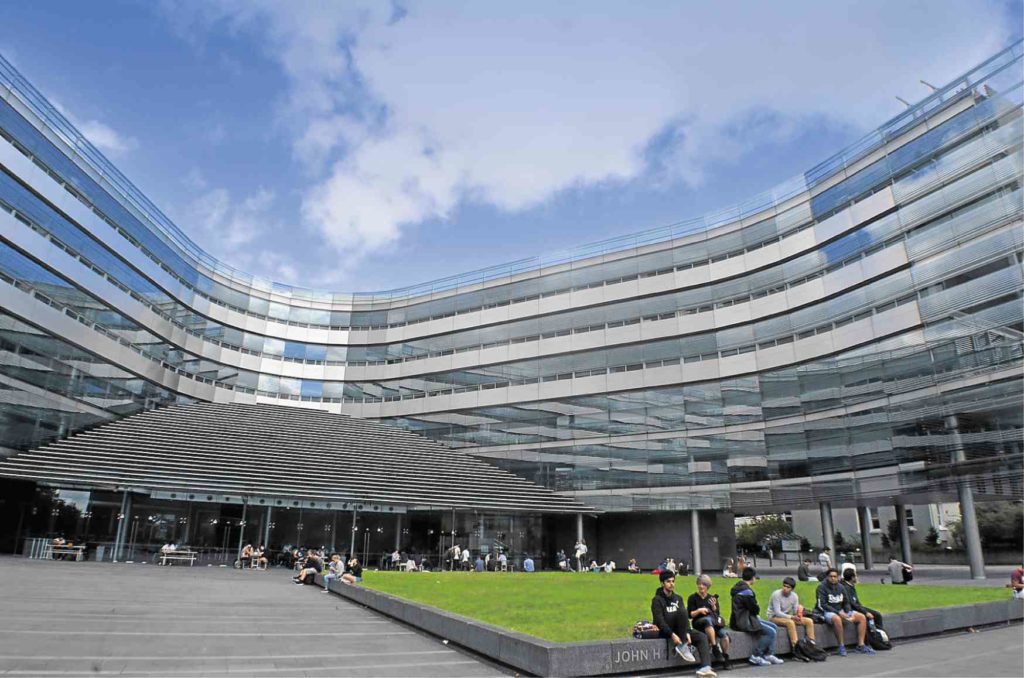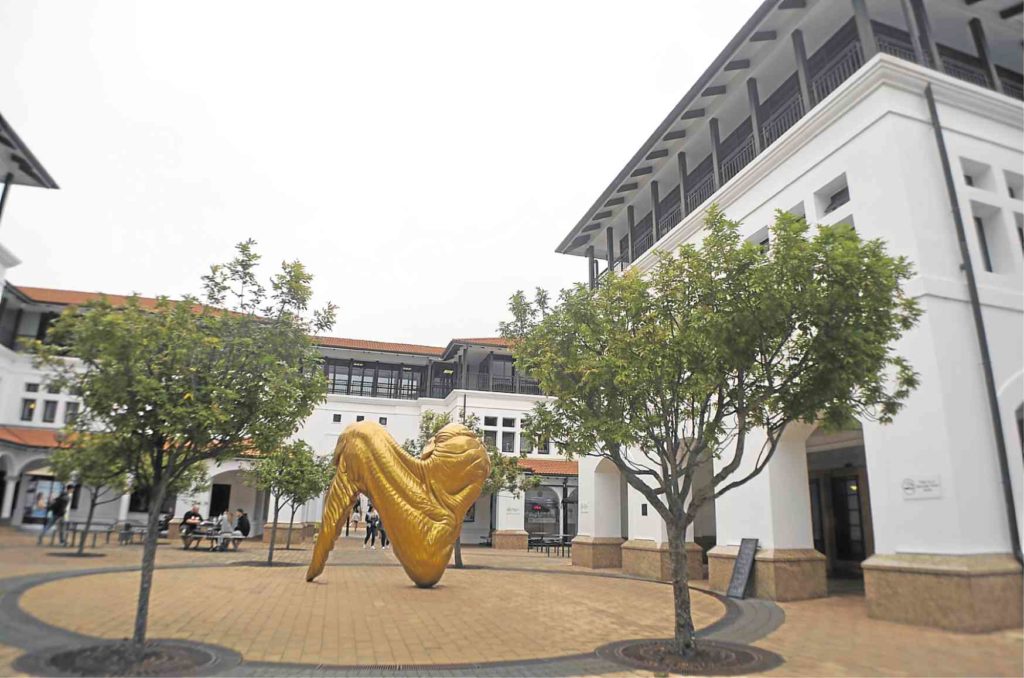Filipino students find a home in Middle Earth

“Thirty million sheep, 5 million cows, 5 million people and 2,000 hobbits.”
This was how Wendy Kerr, director of the Center for Innovation and Entrepreneurship of the University of Auckland, introduced New Zealand to a group of Filipino journalists who visited the country early this year.
But beyond the visual spectacle provided by the “Lord of the Rings” trilogy shot in scenic spots in this country in Oceania, Filipinos know little about New Zealand, especially the opportunities provided by its educational institutions and the doors these may open to their career advancement and professional growth.
Scattered across the main islands of the country—from the largest city of Auckland in the Northland Region down to windswept Invercargill in the Southland Region—are learning institutions where Filipino scholars have found a home.
During the Association of Southeast Asian Nations (Asean) Leaders’ Summit in Manila this week, New Zealand signed several agreements with the Philippines to boost partnerships in education, trade, renewable energy and tourism. President Duterte and New Zealand Prime Minister Jacinda Ardern witnessed the signing.
The agreement on education, which reports say will study the bachelor’s degrees of both countries, is expected to provide opportunities to more Filipinos to study in New Zealand, whose strengths are in the fields of agriculture development, private sector development, public sector management and disaster risk management.
Figures from Education New Zealand (ENZ), New Zealand’s government agency for international education, show that some 26,000 international students make up 15 percent of university students in the country. Of these, 39 percent are enrolled in postgraduate studies.
Currently, some 4,000 Filipino students are studying in New Zealand. Most of them are in state-funded institutions in Auckland (46 percent) and the Bay of Plenty region (17 percent). The rest are distributed in Otago (7 percent), Canterbury (7 percent), Wellington (6 percent), Hawke’s Bay (6 percent) and other regions (11 percent).
Industry partners
New Zealand holds the distinction of being the only country to have all universities ranked within the Top 500 universities in the world. The latest Quacquarelli Symonds (QS) World University Rankings showed the University of Auckland, University of Otago, University of Canterbury, Victoria University of Wellington, University of Waikato, Massey University, Lincoln University and Auckland University of Technology belonging to the top 3 percent of universities globally.
Institutes of Technology and Polytechnics (ITPs) around the country offer vocational courses that equip students with practical skills and hands-on experience suited for every industry.
Apart from universities and ITPs, New Zealand has more than 700 private training establishments that lead students to jobs in specialist industries such as business and technology, food and hospitality, tourism and even animation and game design.
ENZ officials say their country’s universities and other institutes of learning take pride in preparing their students to be industry-ready when they leave school. Even students in secondary schools are provided with necessary skills, tools, technology and environment to be able to compete.
Filipino students—from Tuguegarao City up in northern Luzon to Mindanao—are training or have trained across disciplines in New Zealand universities and ITPs. Among these fields are law, engineering, business, renewable energy, construction, sports management, service and hospitality, and nursing and health services.
School administrators and officials who journalists had interacted with attest to the industry and hard work that Filipino students show in their adopted country. Many of them, they say, excel in academics and assimilate well.

Expertise
As it invests in knowledge, New Zealand, however, wants to attract the right people to its shores, with each region focusing on specific areas of training expertise.
At the University of Auckland, for example, Shane Ball, the university’s international marketing manager, says the most popular postgraduate courses among their students, Filipinos included, are business and engineering.
At Massey University, in the outskirts of Auckland city center, a stock trading room has been set up so students can apply their knowledge on markets and investments.
The university’s food science and technology program has been a major contributor to New Zealand’s land-based economy through the university’s close links to industry. “We train our students to start their own companies … We give skills here to do business, create business,” says Tony Mutukumira, PhD, a senior lecturer at the Massey Institute of Food Science and Technology.
The Media Design School at the heart of Auckland trains students on animation and game development in a relaxed and modern environment, far from the typical classroom setting in Philippine schools. Aspire2 International, on the other hand, offers a wide range of courses that include business, engineering, information technology (IT), health services and hospitality management.
Graeme Rennie, international education director at Toi Ohomai Institute of Technology in Rotorua, says among the institution’s most popular international programs are nursing and health services and IT. The institute also offers courses related to forest management and environment.
Rennie says Rotorua, considered the center of Maori culture, offers strong support systems for international students, noting that Filipinos have felt very welcome.
“Rotorua is nice and peaceful, but never boring,” he says.
At Lincoln University in Christchurch, students are exposed to the science and technology in commercial farming, far from the labor-intensive features of agriculture in the Philippine countryside. Melissa Carbonell, a graduate of the University of the Philippines Los Baños and who is taking her master in agribusiness at Lincoln University, attests to the stark difference in farm work in New Zealand and the Philippines.
The university also maintains a winery where experts train students from planting specific types of grapes in various regions to producing top-quality wine in its laboratories.
Among the strengths of University of Canterbury, also in Christchurch, is engineering and disaster risk management, which is apt for a region that witnessed the devastation of the 6.3 magnitude earthquake that killed 185 people, among them Filipinos.
At Ara Polytechnic, students are given hands-on training in running restaurants, coffee shops and bars, among others.
Bree Loverich, program manager for international education of Christchurch Educated, says New Zealand is “good at giving students options.”
At the southern tip of New Zealand at Invercargill, life is a bit slower. But the Southern Institute of Technology (SIT) offers quality training in nursing with its learning spaces simulating a hospital environment and equipped with modern audio-visual equipment.
Its students are being trained at construction, with houses they designed and built being sold by the institute.
Chami Abeysinghe, SIT international director, says through education and training, they want to bring in skills needed in the region.
“[We want] to get the right people to stay, to contribute,” Abeysinghe says.
Work-life balance
While studying and living in New Zealand may not be cheap (1 New Zealand Dollar = P34.92), student loans and scholarships are made available to students.
“Student loan makes education accessible to everybody,” says Janet Bache, senior communications advisor to ENZ.
Tertiary international students in full time programs, according to ENZ, may be able to work up to 20 hours weekly and up to 40 hours weekly during holidays. Those enrolled in research-based masters and doctorate courses are allowed to work full time.
ENZ says these international students may be eligible for a 12-month work visa. “Once working, they may be eligible to explore visa options for a further two or three years.”
Filipino students whom the Inquirer talked to during the visit agree that they find studying and living in New Zealand to be relaxed, having experienced the rigid system in Philippine schools. New Zealand, they say, puts a premium on work-life balance and ensures that students and their families spend more time together.
The fast pace in New Zealand’s major cities is balanced by quiet time spent in parks, beaches, snow-covered mountains, clean rivers and seas, pasturelands and forests that are practically in one’s backyard.
New Zealand is among the world’s most peaceful and least corrupt countries and Kiwis are friendly, much like Filipinos.
But to Filipinos who have long been living and studying in New Zealand, thriving in this country must entail preparation and willingness to invest in self-development and training to survive in a multicultural society.
For more information on studying in New Zealand, visit https://www.studyinnewzealand.govt.nz
